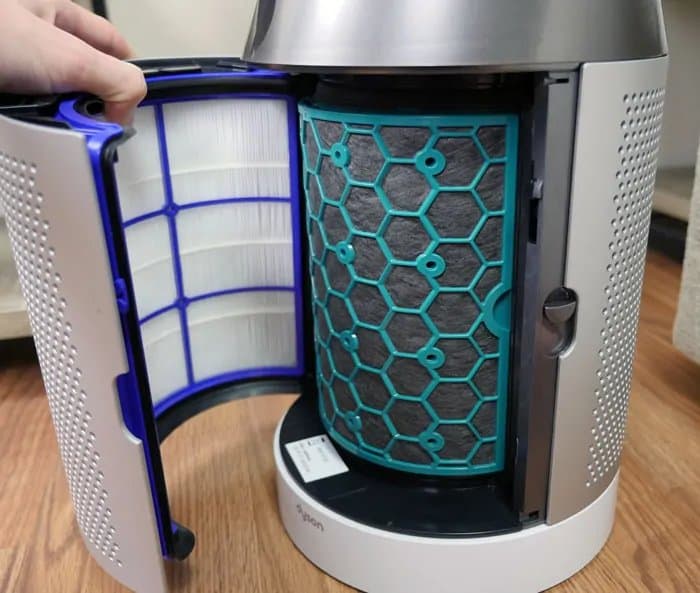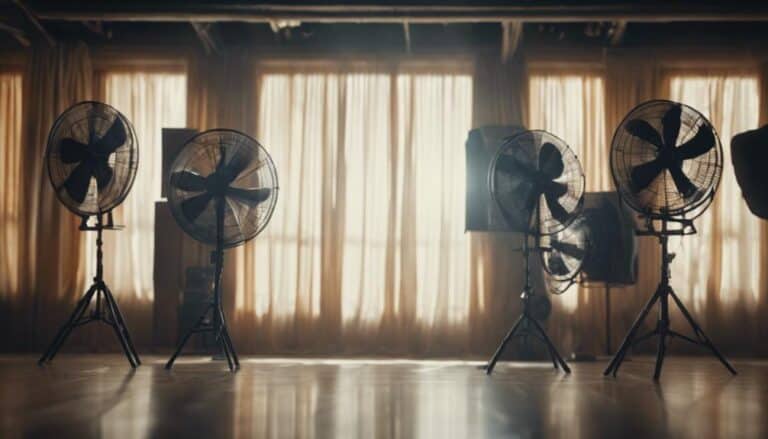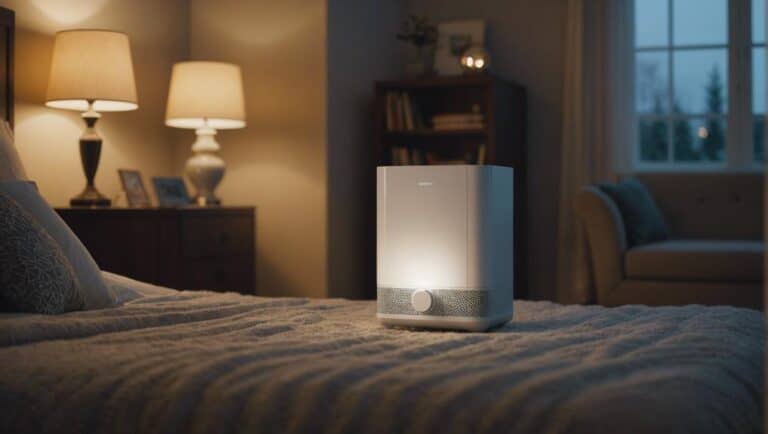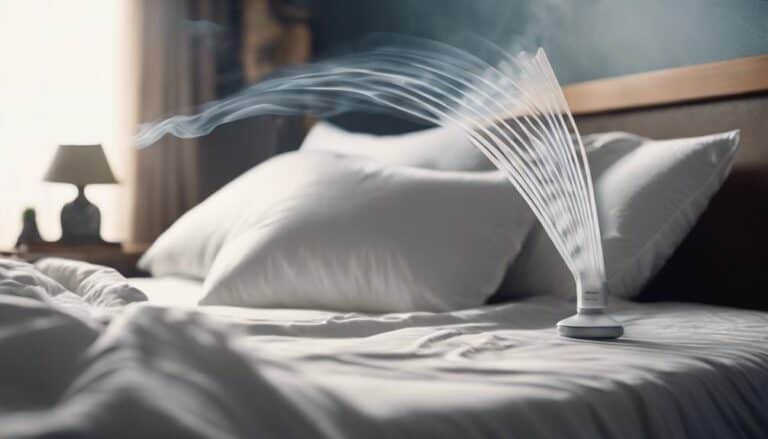Decoding Dyson Air Purifier Filters: Are They Washable or Not?
In the quest for cleaner and healthier indoor air, Dyson has emerged as a leading name. With innovative technology and sleek designs, their air purifiers have gained popularity among homeowners. However, one question that often arises when it comes to maintenance is whether or not the filters are washable.
In this article, we will delve into decoding Dyson air purifier filters, providing you with clarity on whether they can be washed or if other cleaning methods should be employed instead. So get ready to uncover all you need to know about keeping your Dyson air purifier running smoothly and effectively – without compromising its filter’s performance!
Understanding Dyson Air Purifier Filters: A Breakdown of Their Composition
Dyson air purifier filters are composed of multiple layers designed to efficiently capture and remove harmful pollutants from the air.
The primary filter is a HEPA (High-Efficiency Particulate Air) filter, which traps 99. 97% of particles as small as 0. 3 microns in size. This includes common allergens such as dust mites, pollen, and pet dander.
In addition to the HEPA filter, Dyson air purifiers also feature an activated carbon layer that helps absorb odors and volatile organic compounds (VOCs). This layer eliminates unpleasant smells from cooking, smoking, or pets while reducing potentially harmful chemicals in the surrounding air.
The Pros and Cons of Washing Dyson Air Purifier Filters
Pros:
- Easy maintenance: One advantage of washing Dyson air purifier filters is the convenience it offers in terms of maintenance. By regularly cleaning the filters, you can ensure that your air purifier continues to function optimally and effectively remove pollutants from your indoor environment.
- Cost-effective solution: Another benefit of washing these filters is the potential cost savings. Instead of frequently purchasing replacement filters, which can add up over time, washing and reusing them allows you to extend their lifespan and reduce expenses.
- Eco-friendly option: By choosing to wash Dyson air purifier filters instead of discarding them after a single use, you contribute to environmental sustainability. This eco-friendly approach minimizes waste generation and promotes a greener lifestyle.
Cons:
- Time-consuming process: Washing Dyson air purifier filters requires time and effort on your part. It involves carefully removing the dirty filter, rinsing it under running water or using a gentle detergent, ensuring thorough drying before reinstalling it back into the unit. This additional step in maintenance may not be ideal for individuals with busy schedules.
- Reduced effectiveness during cleaning period: While cleaning the filter is necessary for its longevity, doing so temporarily decreases its filtration efficiency. During this interval when the filter has been removed for cleaning but hasn’t dried completely yet or has yet to be reinstalled into the device, airborne particles might not be captured as effectively as they would with a fresh filter in place.
In conclusion Washing Dyson air purifier filters comes with pros such as easy maintenance, cost-effectiveness, and environmentally friendly processes while cons include additional time consumptionduring cleanup nd reduced efficacy during drying period.
Exploring Alternative Cleaning Methods for Dyson Air Purifier Filters
There are alternative cleaning methods available for Dyson air purifier filters, aside from the recommended replacement.
- Vacuuming: Gently vacuuming the surface of the filter can help remove larger particles and debris that might be stuck on it. Be sure to use a soft brush attachment to avoid damaging the delicate filter material.
- Rinsing with water: Some users have reported success in rinsing their Dyson air purifier filters with water to remove dirt and dust buildup. However, it is important to note that this method should be used with caution and only if allowed by the manufacturer’s guidelines.
- Air compressor or blower: Another option is using an air compressor or blower to blow out any trapped particles in the filter. This method can be effective in removing lighter debris without causing damage to the filter.
Before attempting any alternative cleaning methods, it is crucial to refer to the user manual or contact Dyson customer support for specific instructions and recommendations based on your model of air purifier. Remember that regular maintenance such as vacuuming or gently wiping down the exterior of your Dyson air purifier can also contribute to keeping its performance at its best.
Step-by-Step Guide: How to Properly Clean Dyson Air Purifier Filters
Cleaning your Dyson air purifier filters is a simple process that will help maintain optimal performance. Here’s how you can do it properly:
- Turn off the power: Before cleaning, make sure to turn off and unplug your Dyson air purifier for safety.
- Remove the filter(s): Open the unit’s back cover and carefully take out the filters.
- Rinse with cold water: Rinse each filter under cold running water until the water runs clear. Avoid using any detergents or hot water as they may damage the filters’ efficiency.
- Gently squeeze excess water out: After rinsing, gently squeeze each filter to remove excess moisture without twisting or bending them.
- Let it dry naturally: Place the filters in a well-ventilated area and let them air dry completely before reinstalling them (this could take up to 24 hours).
- Reinstall & restart: Once dry, place back both cleaned filters into their respective slots within your Dyson air purifier, secure its back cover, plug in again, and then turn on.
Remember to clean your Dyson air purifier filters regularly as dust and other airborne particles can accumulate over time affecting its performance.
Maintaining Your Dyson Air Purifier: Regular Cleaning and Replacement
Regular cleaning and maintenance are vital for keeping your Dyson air purifier in top condition. Here are some important steps to follow:
- Cleaning the pre-filter: The pre-filter is washable, which means you can rinse it with running water every month or as needed. Ensure it’s completely dry before putting it back in.
- Replacing the activated carbon filter: The activated carbon filter should be replaced once a year or when its efficiency decreases significantly. Check the user manual for specific instructions on how to replace this filter.
- Checking the HEPA filter: Although not washable, you can vacuum off dust from the surface of the HEPA filter using a soft brush attachment while avoiding any direct contact with your skin.
- Replacement timing: To ensure optimal performance, consider replacing both the HEPA and activated carbon filters at least once per year, depending on usage levels and environmental conditions.
Follow these simple maintenance steps to ensure clean air at all times!
Extending the Lifespan of Dyson Air Purifier Filters: Tips and Best Practices
Regular maintenance is key to prolonging the lifespan of your Dyson air purifier filters. By following these tips and best practices, you can ensure optimal performance and efficiency:
- Keep the surrounding area clean: Dust, pet hair, and other airborne particles can accumulate on your air purifier’s filters. Regularly dusting and vacuuming the room will help prevent excess buildup.
- Replace pre-filters when necessary: Some Dyson models have a separate pre-filter that captures larger particles before they reach the main filter. Check this filter regularly for dirt or debris, replacing it as needed.
- Follow recommended replacement schedule: While not washable, Dyson recommends replacing their non-washable HEPA filters every 12 months under normal usage conditions. Following this schedule ensures proper filtration effectiveness.
- Avoid excessive moisture exposure: Exposing your air purifier filter to water or excessive humidity can damage its functionalities permanently – avoid washing them at all costs!
By incorporating these practices into your cleaning routine, you’ll be able to maximize both the performance and longevity of your Dyson air purifier’s filters.






